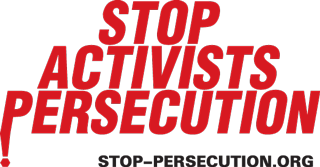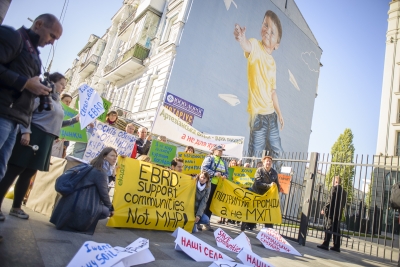Activists and community members consider it unacceptable for the EBRD to finance Ukrainian agricultural companies that do not comply with European environmental standards and neglect the rights of the local population.
In particular, according to official sources, poultry farms in Vinnytsia and Cherkasy regions are the largest contaminants after the thermal power plant (TPP) and chemical enterprises in these regions.
All objects of the "Vinnytsya Poultry Factory" (MHP's subsidiary) are located around the town of Ladyzhyn, which is already weighed by the Ladyzhyn TPP. In the nearby village of Zaozerne, in the back of the already existing ash-slag tails and the background of the emissions of the air, there is a plan to build a rearing facility and a biogas plant. Another village in the Vinnytsia area, Ol'yanitsya, is surrounded by four brigades of a poultry factory and a mixed fodder plant. In addition, all the transport of the Vinnytsya poultry farm passes through the village, resulting in the destruction of local residents' homes.
However, MHP does not plan to stop at this point. In Vinnytsia, it is planned to double production by 2022. At present, the Vinnytsia poultry farm consists of 12 brigades with a capacity of 1.5 million hens per landing. At the same time, the poultry farms from 85,000 broilers are already considered objects of increased environmental hazard.
Activists who plan the MHP also undergo constant pressure. A village chairman of the village of Yasnozirya was beaten up in the Cherkasy region. He counts this case to be related to his active position regarding the resistance to the development of the chicken raising facility in the lands of his community. The court case is ongoing.
"Perhaps we will be heard by the bank. For more than a year, requests for a meeting were not answered by local communities first-hand," said Tamara Kharchylava, community development coordinator of the NGO, Ecoaction.
"We want the EBRD policy and EU community standards to be enforced. The EBRD should require the MHP to implement the bank's environmental and social policies, the EU Environmental Impact Assessment Directive, the Aarhus Convention on Access to Information, the Public Participation in Decision-making and Access to Environmental Matters, and Best Practices in Field of Business," said Vladlena Martsynkevych, representative of NGO Ecoaction "and CEE Bankwatch Network. "This means that the MHP should make project documentation publicly available on its own initiative, and at the request of the public."
The activists managed to talk to the EBRD representatives during the public event and were invited to a short meeting at the office. Vladlena Martsynkevych said: "This is the first step. We are looking forward to further actions by the bank and we will closely monitor how our claims are heard."
It is worth mentioning that "Myronivsky Hliboproduct" (TM Nasha Ryaba) is the largest producer of chicken in Ukraine and the largest company of such a plan in Eastern Europe today. Activists from the local communities in three regions of Ukraine said they were protecting the rights to clean environment through the activities of the agroholding in their localities.


